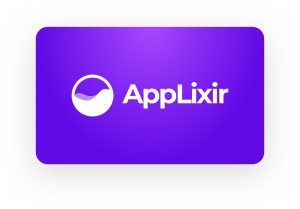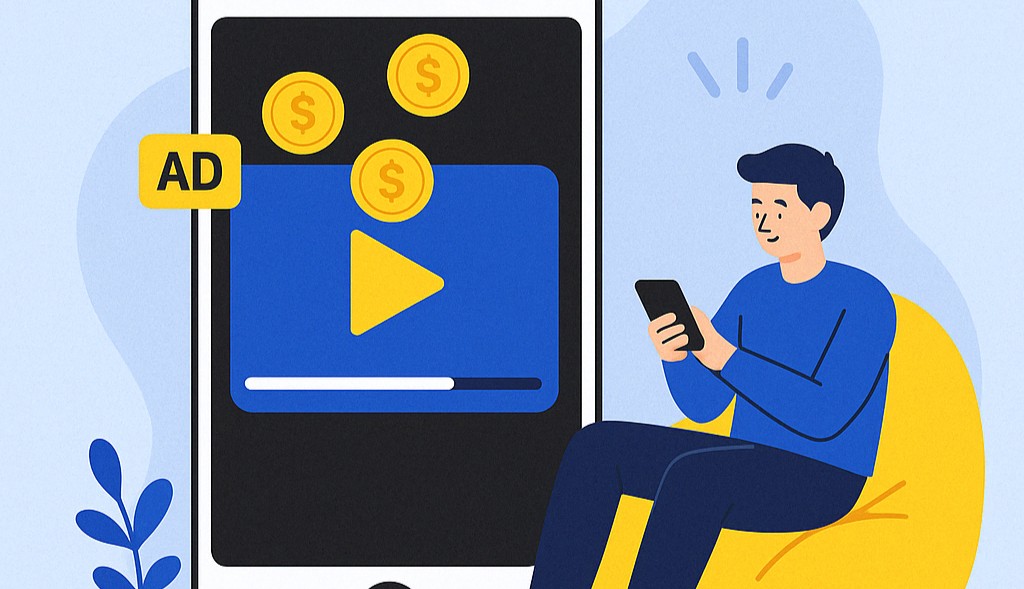Rewarded Video Ads as a Go-To Strategy for Monetization
In the dynamic world of digital gaming, monetization strategies are continually evolving to meet the preferences of diverse player demographics. Among these, Gen Z stands out as a pivotal group, influencing trends and shaping the future of in-game advertising. One strategy gaining significant traction is the use of rewarded video ads. This approach not only aligns with Gen Z’s gaming habits but also offers developers and advertisers a lucrative avenue for engagement and revenue.
Contents
- 1 Understanding Rewarded Video Ads: A Win-Win Proposition
- 2 The Technical Framework Behind Rewarded Videos
- 3 Gen Z’s Influence on Gaming Monetization: A Paradigm Shift
- 4 The Appeal of Rewarded Video Ads to Gen Z: Psychology and Preferences
- 5 Case Studies: Successful Implementation in Major Platforms
- 6 The Broader Impact on the Gaming Industry: Economic and Design Implications
- 7 Advantages for Advertisers: Quality Engagement
- 8 Implementing Rewarded Videos: Best Practices for Developers
- 9 AppLixir: A Sustainable Approach to Monetization
Understanding Rewarded Video Ads: A Win-Win Proposition
Rewarded video ads are short, typically 15 to 30-second, opt-in advertisements that offer players in-game incentives—such as currency, power-ups, or exclusive items—in exchange for watching the ad. Unlike traditional ads that interrupt gameplay, these ads provide value to the player, enhancing their gaming experience while simultaneously generating revenue for developers.
The mechanism is straightforward yet powerful: players voluntarily choose to watch an advertisement in exchange for something they value within the game. This voluntary engagement creates a positive experience where players feel they’ve made a fair trade rather than having their gameplay forcibly interrupted.
The Technical Framework Behind Rewarded Videos
From a technical standpoint, rewarded video ads are integrated into games through software development kits (SDKs) provided by mobile ad networks or mediation platforms. These SDKs handle ad loading, display, verification of view completion, and reward distribution. The implementation typically involves:
- Strategic Placement: Identifying natural break points or moments of need within the game where players would most value rewards
- Ad Loading: Pre-loading videos to ensure seamless playback when a player opts in
- Reward Delivery: Automating the process of verifying ad completion and distributing the promised in-game reward
- Analytics Integration: Tracking performance metrics like view-through rates, completion rates, and subsequent player behavior
This integration requires careful balance—too many opportunities for rewarded ads may diminish their value, while too few might limit revenue potential.
Gen Z’s Influence on Gaming Monetization: A Paradigm Shift
Born between the mid-1990s and early 2010s, Gen Z has grown up in a digital-first environment. Their familiarity with technology and preference for personalized experiences have made them a dominant force in the gaming industry. According to a 2019 survey by deltaDNA, 94% of free-to-play game developers incorporate some form of in-game advertising, with rewarded videos being the most prevalent. This trend underscores the effectiveness of rewarded ads in capturing Gen Z’s attention and willingness to engage with brands that offer tangible value.
Digital Natives with Distinct Preferences
Gen Z’s gaming habits differ significantly from previous generations in several key ways:
- Shorter, More Frequent Sessions: Gen Z gamers often play in brief bursts throughout the day rather than extended sessions
- Multi-Platform Engagement: They seamlessly move between mobile, console, and PC gaming
- Social Integration: Gaming is viewed as a social activity and community experience
- Value Consciousness: They are willing to engage with monetization but expect fair value in return
- Ad Awareness: Having grown up with digital advertising, they’re highly attuned to manipulative or disruptive ad practices
These characteristics make rewarded video ads particularly effective for this demographic. The voluntary nature of these ads respects their agency, while the immediate reward system aligns with their preference for instant gratification.
Economic Factors in Driving Preference
Economic realities also influence Gen Z’s receptiveness to rewarded ads. With many still in school or early in their careers, they often have limited disposable income for in-app purchases or premium game subscriptions. Rewarded ads present an alternative path to accessing premium content or accelerating progress without financial expenditure—essentially trading time and attention instead of money.
Recent research from Tapjoy indicates that 76% of Gen Z gamers prefer to watch rewarded ads rather than make in-app purchases, and 72% report that they actively seek out games that offer reward-based advertising options.
The Appeal of Rewarded Video Ads to Gen Z: Psychology and Preferences
The effectiveness of rewarded video ads with Gen Z audiences stems from several psychological and preferential factors that align perfectly with this demographic’s values and expectations.
Value Exchange: Transparency and Reciprocity
Gen Z appreciates transparency and reciprocity. Rewarded ads offer a clear exchange—time for rewards—which resonates with their desire for fairness and control. This generation has developed a keen sense for identifying transactions that respect their agency and provide genuine value.
The explicit nature of the value proposition—”Watch this 30-second ad to receive 50 gems”—creates a contract that feels fair and straightforward. This transparency builds trust between players and developers, establishing a foundation for long-term engagement.
Non-Intrusive Experience: Respecting Player Autonomy
Unlike forced ads, rewarded videos are optional, allowing players to choose when and if they want to engage, thereby respecting their autonomy. This aspect is particularly important to Gen Z, who have grown increasingly resistant to interruptive advertising formats that force engagement.
The power to decide when to engage with advertising—typically at moments when the in-game reward would be most valuable—creates a sense of control that traditional advertising lacks. Players can strategically choose to watch ads when they need specific resources or advantages, integrating the ad experience into their overall game strategy.
Enhanced Engagement: Meaningful Rewards
The incentives provided can lead to prolonged gameplay and increased engagement, as players are motivated to earn and utilize their rewards. This creates a virtuous cycle:
- Players watch ads to earn rewards
- Rewards enhance gameplay experience
- Enhanced experience leads to longer play sessions
- Longer sessions create more opportunities for monetization
Game developers have become increasingly sophisticated in designing reward structures that meaningfully impact gameplay without undermining the core game economy. These rewards often include:
- Consumable Resources: Currency, energy, or other replenishable resources
- Time Accelerators: Reducing wait times for actions or development
- Power-Ups: Temporary advantages or abilities
- Exclusive Cosmetics: Limited-time or special appearance modifications
- Extra Lives/Continues: Additional attempts at challenging content
The psychological principle of operant conditioning underlies this system—the reward reinforces the behavior (watching the ad), increasing the likelihood of repeated engagement.
Case Studies: Successful Implementation in Major Platforms
The adoption of rewarded video ads by major gaming platforms provides compelling evidence of their effectiveness and staying power as a monetization strategy.
Roblox’s Partnership with Google
In April 2025, Roblox announced a partnership with Google to introduce rewarded video ads on its platform. Players can now watch 30-second ads in exchange for in-game rewards like boosts and resources. These ads are available for brands and agencies to purchase through Google’s ad platform, expanding reach to a broader audience. With over 85.3 million daily active users, Roblox aims to capitalize on its large Gen Z user base. This move signifies a significant shift in how gaming platforms monetize and engage users.
The implementation across Roblox’s ecosystem allows for contextual targeting—matching ads to relevant experiences within the platform’s diverse range of games. Early data suggests engagement rates exceeding industry averages by 27%, with particular success among brands offering products and services aligned with Gen Z interests.
Discord’s Introduction of Mobile Video Ads
Discord is set to launch third-party mobile ads through its “Video Quests” feature in June 2025. Users can earn rewards, such as avatar decorations and in-game items, by watching videos. Originally launched on PCs and consoles, this feature’s expansion to mobile signifies Discord’s efforts to diversify revenue streams and provide brand partners access to its highly engaged mobile audience. This development highlights the growing trend of integrating rewarded video ads into various gaming and communication platforms.
Discord’s approach is particularly notable for integrating the rewarded ad system into its social ecosystem, allowing users to earn rewards that enhance their social presence rather than just gameplay advantages. This demonstrates the versatility of the rewarded ad model beyond traditional gaming contexts.
The Broader Impact on the Gaming Industry: Economic and Design Implications
The integration of rewarded video ads is not just a trend but a reflection of a broader shift in the gaming industry’s monetization strategies. By aligning revenue generation with user satisfaction, developers can create sustainable models that benefit all stakeholders.
Benefits for Developers: Sustainable Monetization
The economic advantages for game developers implementing rewarded video ads are substantial and multifaceted:
Increased Revenue
Rewarded ads offer a higher eCPM (effective cost per mille) compared to traditional ad formats, leading to better monetization. Industry data from ironSource indicates that rewarded videos generate 20-40% higher eCPM rates than interstitial ads and up to 5x higher than banner ads. This revenue advantage is particularly pronounced for games with large Gen Z audiences.
The opt-in nature of these ads also results in higher completion rates—typically 80-90% compared to 30-40% for forced video ads—which translates directly to increased revenue per ad impression.
Enhanced User Retention
By providing valuable rewards, players are more likely to stay engaged with the game over time. Data from AppsFlyer suggests that games implementing rewarded videos see a 30-day retention rate increase of 15-30% compared to those using only interstitial or banner ads.
This retention benefit stems from multiple factors:
- Players receive resources that enhance their gameplay experience
- The rewards system creates additional engagement loops
- Players develop positive associations with the game economy
Positive User Experience
Optional ads reduce user frustration, leading to higher satisfaction and positive reviews. App store ratings typically increase by 0.5-1.0 stars following the implementation of rewarded videos as an alternative to mandatory ads, according to analyses by Sensor Tower.
This improvement in user experience extends beyond immediate satisfaction to build long-term player loyalty and positive word-of-mouth, critical factors for sustainable success in the competitive gaming market.
Advantages for Advertisers: Quality Engagement
The benefits of rewarded video ads extend equally to advertisers seeking to connect with elusive Gen Z audiences:
Targeted Engagement
Ads are shown to users who choose to engage, leading to higher conversion rates. This self-selection creates a more receptive audience—viewers have already demonstrated interest by opting in, resulting in attention rates 3-4 times higher than forced ad formats according to data from AdColony.
The contextual placement within games also enhances relevance, with ads appearing at moments when players are already engaged and seeking additional resources or advantages.
Brand Affinity
By offering value, brands can build positive associations with players. This “value-first” approach resonates particularly well with Gen Z consumers, who tend to favor brands that contribute positively to their experiences rather than those that simply interrupt them.
Research from Tapjoy indicates that 75% of players report positive or neutral feelings toward brands featured in rewarded ads, compared to just 32% for those in interstitial ads. This affinity translates to measurable increases in purchase intent and brand recall.
Data Insights
Platforms can provide detailed analytics on ad performance, aiding in campaign optimization. The voluntary nature of engagement provides cleaner data on genuine interest and attention, allowing for more accurate measurement of:
- View completion rates
- Post-view engagement
- Subsequent in-game behavior
- Conversion to install or purchase
These insights help advertisers refine targeting, creative approaches, and overall campaign strategy to maximize return on investment.
Implementing Rewarded Videos: Best Practices for Developers
For game developers looking to implement rewarded video ads effectively, several best practices have emerged from successful implementations:
Strategic Placement and Timing
The most effective rewarded video implementations appear at natural friction points in the gaming experience—moments when players would most value additional resources or advantages:
- After completing a level or challenge
- When running low on essential resources
- Before attempting difficult content
- As an alternative to waiting for time-gated processes
- When browsing in-game stores or resource menus
These strategic placements ensure that the value proposition is immediately clear and relevant to the player’s current needs or goals.
Balancing Reward Value
Finding the optimal reward value requires careful consideration:
- Too small: Players won’t feel incentivized to engage
- Too large: May disrupt game economy or progression
- Just right: Provides meaningful advantage without undermining core gameplay
Many successful implementations use a tiered reward system, offering basic rewards for single views and premium rewards for multiple or consecutive views, creating multiple engagement opportunities with escalating value.
Clear Communication
Transparency about the reward mechanism builds trust with players:
- Explicitly state what reward will be received
- Indicate the exact length of the video
- Provide clear UI elements indicating when ads are available
- Offer preview of potential rewards
This clarity ensures players can make informed decisions about when and how to engage with rewarded content.
Technical Optimization
The technical implementation significantly impacts user experience:
- Pre-load ads to minimize wait times
- Ensure ads play smoothly without application crashes
- Implement reliable reward delivery confirmation
- Build fallback mechanisms for when ads are unavailable
- Optimize for various connection speeds and device capabilities
These technical considerations help maintain the positive experience that makes rewarded ads effective in the first place.
AppLixir: A Sustainable Approach to Monetization
Rewarded video ads represent a harmonious blend of user satisfaction and monetization. By offering tangible value to players, especially the influential Gen Z demographic, these ads foster deeper engagement and loyalty. As platforms like Roblox and Discord continue to innovate in this space, it’s clear that rewarded video ads are not just a passing trend but a fundamental shift in how games generate revenue and interact with their audiences.
The success of this model demonstrates that respecting player agency and providing genuine value creates sustainable monetization opportunities. As the digital ecosystem continues to evolve, the principles underlying rewarded video ads—choice, transparency, and value exchange—will likely remain foundational to successful monetization strategies across gaming and beyond.
For developers, marketers, and industry stakeholders, understanding and optimizing rewarded video implementation represents not just an immediate revenue opportunity but an investment in building lasting relationships with the increasingly influential Gen Z audience. Those who master this approach stand to benefit from both immediate engagement and long-term loyalty in an increasingly competitive digital landscape.



